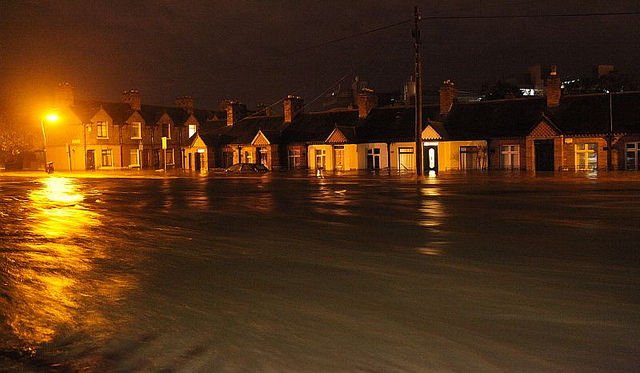
Over 1,000 homes in Dublin were flooded following heavy rain in the capital last October, a new report has revealed.
The floods, which killed two people and caused damage across Dublin and parts of Wicklow, flooded a total of 1,008 properties, according to Dublin City Council’s Environment and Engineering Strategic Policy Committee.
Up to 90mm of rain fell during six hours on the evening of October 24th, causing havoc for road users and homeowners alike.
The report found that there were 318 “significant” road floodings and “several thousand reports” of minor road flooding.
It was revealed that there was a half hour delay in closing two floodgates on the River Dodder because staff could not find the keys. Local residents and the fire brigade were forced to break the locking mechanism and tie the gates together until they were property closed later that evening.
The city council’s Drainage Division has reviewed its protocol for closure of these gates, the report says, and promises in future that it will be closing the gates on foot of both tidal and pluvial adverse weather forecasts, but this will be ”subject to staff availability”.
Overall, the report stated that drainage systems across the city became overwhelmed and gullies could not be cleared until waters subsided.
It recommended Flood Resilience Groups be set up as the best way to identify and deal with problem flooding.
The report said that the Office of Public Works will look at the possibility of carrying out work on the Camac river and the Poddle river, which caused heavy flooding in Kilmainham and Crumlin respectively.
Central funding will be sought to carry out works on underground rivers including the Swan which caused flooding in Ballsbridge, the Bradogue in Cabra and the Naniken in Raheny.







